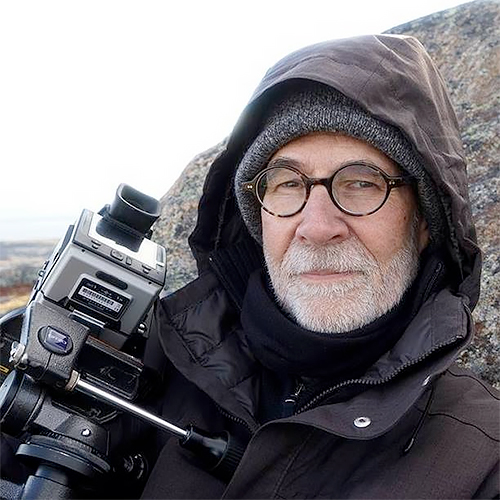Dave Jordano was born in Detroit, Michigan in 1948. He received a BFA in photography from the College for Creative Studies in 1974. In 1977 he established a successful commercial photography studio in Chicago, IL, shooting major print campaigns for national advertising agencies.
Since 2000, Jordano has concentrated on and established himself as an awarding winning mid-career fine art documentary photographer. He was awarded an honorable mention in the Houston Center for Photography’s Long Term Fellowship Project in 2003, and received the Curator’s Choice Award the following year for his documentary work on Small African American Storefront churches on the south side of Chicago. In 2006, 2008, 2013, and 2016 Jordano has been selected as a top 20 finalist in Photolucida's "Critical Mass" International Photography Competition. He was also selected for inclusion in "One Hundred Portfolios", a compilation featuring the work of 100 leading photographers from around the world and sponsored by Wright State University, Dayton, OH. A major exhibition of his work from the "Articles of Faith" project was held at the Chicago Cultural Center, Chicago, Illinois in 2009.
In 2014-15 he was a finalist in the LensCulture Exposure Awards for his documentary work on Detroit and was also included in the highly competitive Outwin Boochever Portrait Competition at the National Portrait Gallery in Washington DC. Most notably, Jordano won the prestigious Canadian AIAMI / AGO Photography prize for 2015, which included a $50,000 prize and a six week, fully paid residency anywhere in Canada which he fulfilled by documenting the northern arctic town of Iqaluit, Nunavut, Canada.
Jordano has exhibited both nationally and internationally and his work is included in several private, corporate, and museum collections. Most notably the Library of Congress, Prints and Photographs Division, Washington DC, the Museum of Contemporary Photography, Chicago, IL, The Museum of Fine Arts Boston, The Museum of Fine Arts Houston, The Detroit Institute of Arts, The Mary & Leigh Block Museum of Art at Northwestern University, Evanston, IL, the Harris Bank Collection, and the Federal Reserve Bank.
His second book, published by the Center for American Places at Columbia College, Chicago titled, "Articles of Faith, Small African American Community Churches of Chicago", released in April 2009.
His most recent publication, "Detroit - Unbroken Down" documents the cultural and societal changes of his home town of Detroit and was published in the fall of 2015 by PowerHouse Books, Brooklyn, NY.
His fourth coming publication "A Detroit Nocturne" with an essay by Karen Irvine, Co-Director of the Museum of Contemporary Photography, Chicago, will also be published by PowerHouse Books and has a launch date scheduled for April 2018.
Dave Jordano currently lives in Chicago, Illinois.
Selected Books on

